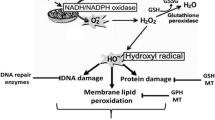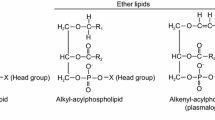Abstract.
It is becoming increasingly clear that lipids are key regulators of cellular function and that these effects are quite diverse. First, the lipid environment in the cellular membrane bilayer is important in maintaining the normal function of receptors, enzymes, transporters and so on that are localized in the membrane. Phosphoinositides are important regulators of signalling molecules. Lipid metabolites formed by a number of enzymes including the cyclooxygenases, lipoxygenases and P450s also mediate important cellular functions. Fatty acids and lipid metabolites can also activate the nuclear peroxisome proliferator-activated receptors. Finally, a wide variety of lipid molecules are generated nonenzymatically by free-radical mechanisms that also exert potent biological effects in a wide variety of organs. Presented are a series of eight reviews that broadly cover all of these topics in some detail.
Similar content being viewed by others
Author information
Authors and Affiliations
Corresponding author
Rights and permissions
About this article
Cite this article
Roberts, L. Introduction: lipids as regulators of cell function. CMLS, Cell. Mol. Life Sci. 59, 727–728 (2002). https://doi.org/10.1007/s00018-002-8461-3
Published:
Issue Date:
DOI: https://doi.org/10.1007/s00018-002-8461-3




